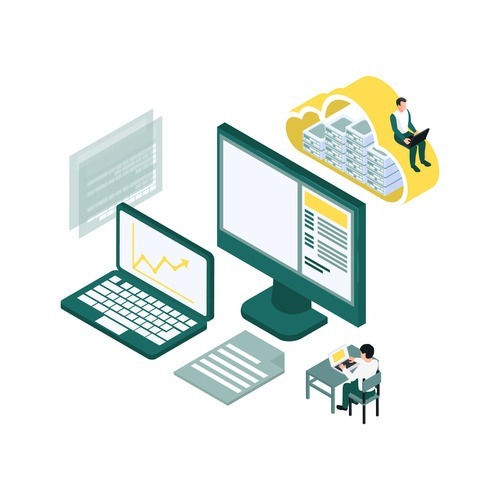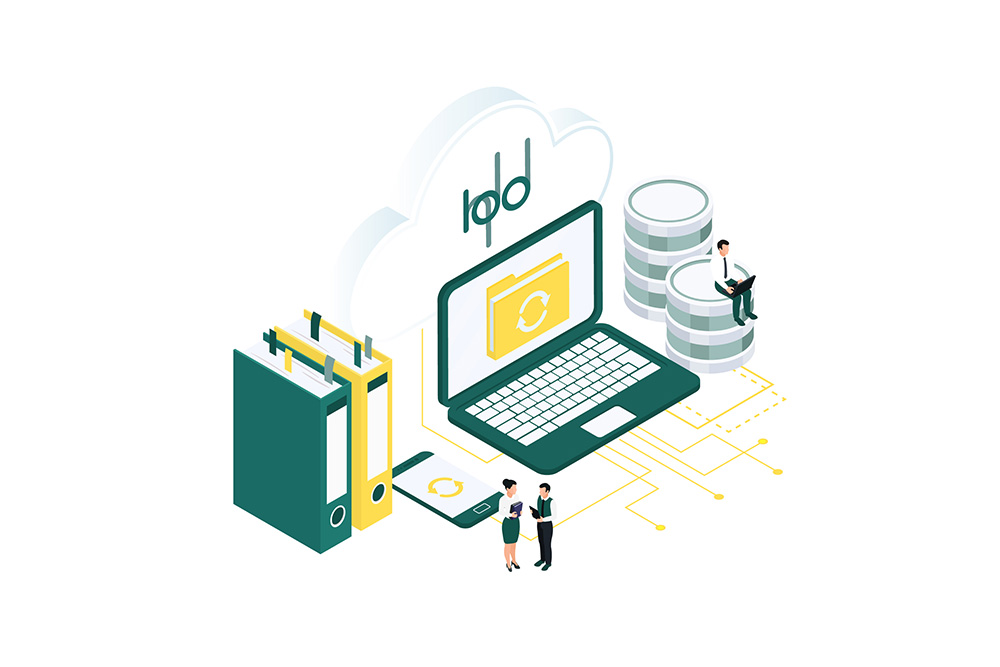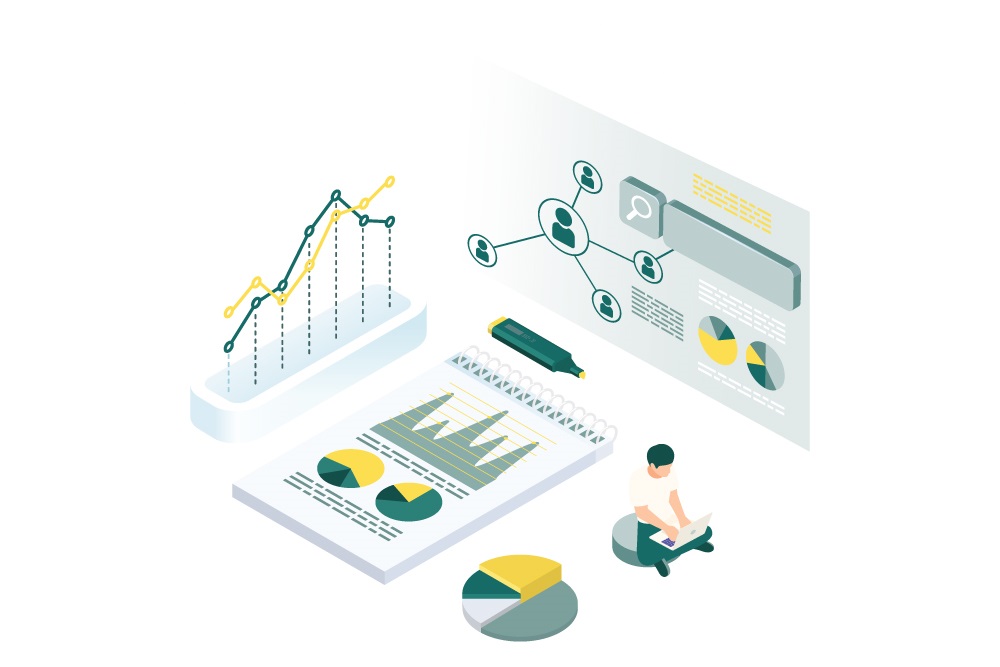
Introduction
In the intricate mosaic of modern business operations, the profound impact of a well executed ERP (Enterprise Resource Planning) system stands out prominently. A robust ERP implementation is not just a software upgrade; it’s akin to instilling a new heartbeat in an organization. Imagine having razor-sharp financial reporting that paves the way for informed decision-making or achieving a level of process optimization that ensures every workflow is executed with unparalleled efficiency.
This is the magic of a well-implemented ERP, and Oracle NetSuite stands at the pinnacle of this transformative journey.
Oracle NetSuite’s vast capabilities extend far beyond mere process streamlining. Its highly integrated architecture means that data isn’t just stored; it’s interwoven across various modules, painting a comprehensive picture of business operations. Every sale, every customer interaction, every inventory change – all captured and connected seamlessly. And the true beauty lies in its adaptability. Unlike traditional systems where businesses have to contort their operations to fit the software, NetSuite is refreshingly customizable. It molds itself, adjusting and aligning with the unique contours of your business, ensuring that it serves you and not the other way around.
Join us as we delve into the expansive universe of Oracle NetSuite ERP implementation, unlocking its myriad benefits and illustrating how it can be the catalyst for your business’s next leap forward.
The Big Picture
In the realm of ERP implementation, starting with the widest lens—the biggest picture—is not just recommended, it’s essential. The foundational pillars of any business, namely its Mission, Vision, Objective, and Values, are more than mere corporate statements. They offer profound insights into a company’s strategic direction, its ethos, and its long-term growth trajectory. Understanding these elements provides a compass, guiding every subsequent decision and action in the ERP implementation process.
Consider the burgeoning sector of ESG (Environmental, Social, and Governance) companies. For them, aligning with their core principles could mean prioritizing partnerships with clean energy suppliers when setting up their supply chain modules in the ERP. But it doesn’t end there. A luxury fashion brand, rooted in exclusivity and artisan craftsmanship, might prioritize modules that track the origin and authenticity of materials, ensuring that every product aligns with their pledge of uniqueness and quality. Similarly, a healthcare company, with a mission centered around patient care, might focus on integrating real time patient data modules to enhance treatment efficacy.
These examples underscore a pivotal truth: The very essence of a company, its Mission, Vision, Objective, and Values, when deeply understood and aligned with, can transform an ERP implementation from a mere technical exercise into a strategic tool for holistic growth and alignment.
Dissecting the Current Landscape
Venturing into the heart of ERP implementation requires an intimate understanding of your existing business operations, workflows, and the skeletal framework that holds it all together – the management structure. It’s a step that demands more than cursory glances; it calls for immersion.
Approaching this stage requires a blend of patience and meticulous scrutiny. Think of it as conducting a comprehensive health check-up for your business, where every pulse, every heartbeat, and even the faintest irregularities need to be detected and assessed.
Each workflow, no matter how minor it appears, holds significance. From the constraints that limit productivity to the nuances of managerial styles that shape team dynamics, everything is placed under the microscope. The hierarchies that dictate reporting, the manual tasks that consume precious hours, and even the very justification for a process’s existence must be examined.
It’s a time to challenge the status quo. Why is a particular task performed manually when automation can enhance efficiency? Why does a certain reporting structure exist, and can it be optimized for better communication? These are the kind of questions that not only shed light on current operations but pave the way for transformative changes.
By viewing the existing operations from multiple vantage points, businesses can identify gaps, redundancies, and areas of potential innovation. This thorough understanding lays the groundwork for an ERP system that’s not just a replica of the current state but a blueprint for a more streamlined, efficient, and future-ready organization.
The Financial Nexus
The financial module stands as the heart of any ERP software, constantly pumping data, transactions, and insights to every other department, facilitating their efficient functioning. Within the Oracle NetSuite ERP ecosystem, this financial core is particularly intricate, reflecting the complex tapestry of today’s corporate financial environments.
Yet, a persistent challenge in many implementations is a gap that often goes unnoticed until it’s too late: the chasm between NetSuite expertise and deep-rooted corporate finance knowledge. This isn’t just about knowing how to click through NetSuite’s financial module; it’s about understanding the why behind each financial process, transaction, and report.
One might liken this to being fluent in a language but not grasping the culture from which it originates. You can get by, but the depth of understanding and richness of experience is missing. When implementing the financial module, a shallow dive can lead to missed opportunities, misalignments, and, in the worst cases, glaring errors that have cascading repercussions.
That’s why it’s crucial to bridge this knowledge gap. Our other blog titled “The Recipe for Success: Merging Finance with NetSuite Implementation” delves deep into this topic. We’ve unpacked the essence of combining finance expertise with NetSuite skills to ensure a seamless, robust, and, above all, effective ERP implementation. The secret sauce, as we
discovered, is in this powerful fusion. And for those keen on truly mastering this blend, it’s a read we highly recommend.
Charting the Path Ahead
Once the current landscape of a business is meticulously mapped out, the compass must then point towards the future: Where does the company aspire to be? Understanding this trajectory is paramount in shaping the framework of the ERP system. It’s like plotting a voyage – knowing the destination is as crucial as understanding the starting point.
Many companies approach ERP implementation with a vague sense of ‘improvement’ in mind. However, genuine success lies in the details. Is the company grappling with bottlenecks in certain departments? Are there workflow inefficiencies that have been long overlooked or accepted as the norm? Maybe there are reporting lags that delay critical decisions or a lack of analytical tools that hinder insights into market trends.
The management’s goals might also encompass a desire for seamless integration with third party systems or tools, ensuring that data flows unimpeded across platforms, enhancing both efficiency and accuracy. Furthermore, in today’s dynamic business environment, adaptability is key. Thus, understanding any potential future requirements or scalability concerns is crucial.
When these targets are clearly identified and articulated, they provide a roadmap for the ERP implementation team. This roadmap doesn’t just ensure that the ERP system meets current needs, but that it’s also primed to evolve with the company, adapting to new challenges, markets, and opportunities. In essence, this step transforms the ERP from a mere tool to a dynamic partner in a company’s growth journey.
Crafting the Blueprint
At the heart of every successful ERP implementation is a thoughtfully conceived design. Think of it as the architectural blueprint for a skyscraper. It’s not enough to just aim high; one must anticipate every wind, weigh every material, and envision every resident to ensure the building not only stands but thrives.
ERP design is where creativity intersects with functionality. It’s the phase that calls for a profound synthesis of understanding the company’s business essence, its ingrained culture, the expectations of management, and the day-to-day realities faced by its staff. This is not a one-size-fits-all endeavor. It’s tailoring a suit to fit perfectly, taking every unique curve and contour into consideration.
Real-world constraints, be they operational bottlenecks, budgetary restrictions, or cultural nuances, need to be navigated with finesse. The challenge lies in maneuvering through this complex web, ensuring that every thread aligns to create a cohesive, functional, and agile system.
Every design decision must be underscored by one guiding principle: practicality. An ERP system might boast an array of impressive features, but if it doesn’t resonate with the specific needs and realities of the business it serves, its utility diminishes. With thousands of considerations on the table, it’s vital to keep the unique identity of the business entity at the
forefront, ensuring the system becomes an organic extension of its operations, rather than a rigid, external imposition.
In this delicate dance of design, it’s about capturing the essence of a business, understanding its heartbeat, and crafting a system that moves in harmony with it. Only then can an ERP truly amplify a company’s potential, streamlining its path to success.
Aligning Visions
After meticulous design comes a step that is equally, if not more, pivotal: alignment with the users and key stakeholders. The heart of any ERP system isn’t in its code or features, but in the hands of those who will use it daily. Therefore, ensuring the company’s pulse aligns with the rhythm of the new system is paramount.
While consultants bring to the table a wealth of knowledge, fresh perspectives, and a treasure trove of alternative approaches, they stand as guides rather than dictators of the process. At the end of the day, it’s the organization itself that possesses an intimate understanding of its unique intricacies, needs, and culture. They have navigated its challenges and celebrated its successes. They have an unparalleled grasp of what works and what doesn’t within their specific environment.
The essence of a consultant’s role is not to overwrite this expertise but to complement it. And herein lies the realization: the company always knows best. They are the experts of their domain. While a consultant can suggest, highlight, and advise, it’s the organization that gives the final nod. Their affirmation isn’t just a formal step; it’s the bedrock on which the success of the ERP system rests.
For this reason, this phase of alignment isn’t a mere presentation of design but a collaborative discussion. Every concern, every suggestion, and every piece of feedback from the users and stakeholders is not just heard but integrated. It’s about ensuring that by the end of this process, the company doesn’t just accept the ERP system but embraces it wholeheartedly. When the company’s workforce is both comfortable with and excited about the new system, it paves the way for a smooth and successful implementation.
Plan is Nothing, Planning is Everything
Crafting the perfect path for ERP implementation requires a balance between foresight and flexibility. When transitioning to a system as robust as Oracle NetSuite, it’s paramount to ensure that day-to-day operations remain uninterrupted. This means every step we take aims for a long-term benefit, yet always remains aware of its immediate impact. It’s about anticipating the challenges ahead and developing proactive strategies.
Detailed Standard Operating Procedures (SOPs) and User Manuals become invaluable assets, acting as both a guide and safety net for teams navigating this new terrain. Remember, implementation is as much about understanding technology as it is about respecting the unique rhythms of a business.
A company’s intricate knowledge of its own needs is irreplaceable. Thus, before diving into the deep end of implementation, a final check-in with the users is essential. It’s about affirmation, ensuring that the upcoming system is not just technically sound but also
intuitively aligned with the people who’ll use it daily. And while we can’t rush perfection, dragging our feet isn’t an option either. Striking that optimal pace, where thoroughness meets timeliness, becomes the key to maintaining momentum and stakeholder confidence in this transformative journey.
Conclusion
In our exploration of successful ERP implementation, we’ve underscored the imperative of starting from the foundation – grasping the very essence of a business, its mission, vision, objectives, and values. This comprehension is further accentuated when we delve into the intricate operations, workflows, and managerial hierarchies. With this holistic understanding, the journey moves into meticulously designing and planning the ERP system, ensuring it serves as a catalyst rather than a hurdle.
However, it’s worth noting that the path of ERP implementation is fraught with challenges. Many businesses find themselves caught in the quagmire of failed implementations, leading to not just financial losses but also significant managerial frustrations. A cornerstone often overlooked is the crucial intersection of corporate finance and ERP systems. The importance of having a finance-centric approach in ERP implementations cannot be overstated.
With Hundred MS, you’re not just getting a partner well-versed in ERP systems. You’re aligning with a team that understands the financial heartbeat of a business and how it syncs with modern ERP solutions. Our track record is a testament to our dual proficiency in finance and ERP. As you consider this monumental step for your business, remember: excellence isn’t just a trait – it’s a commitment we embody at Hundred MS.





Pingback: NetSuite Implementation Cost Guide & Timeline Tips